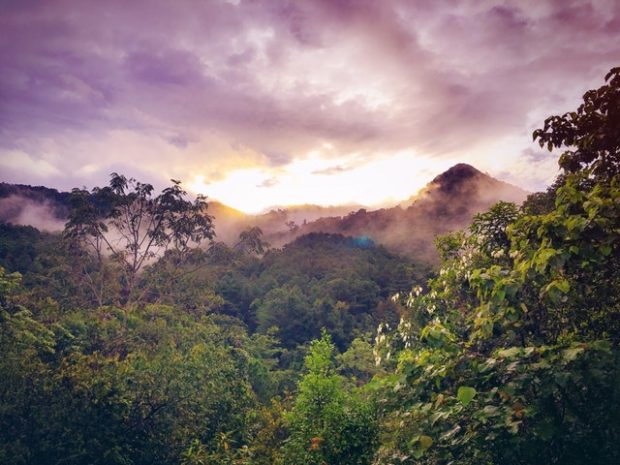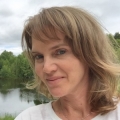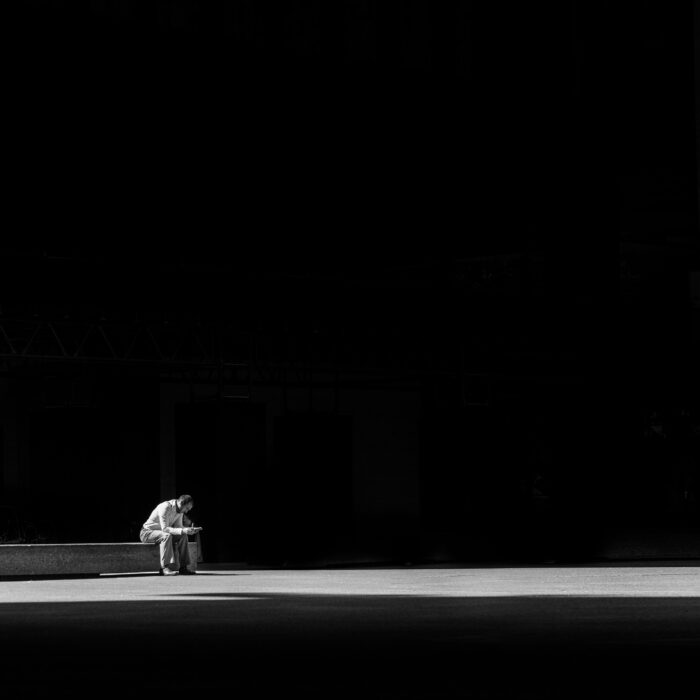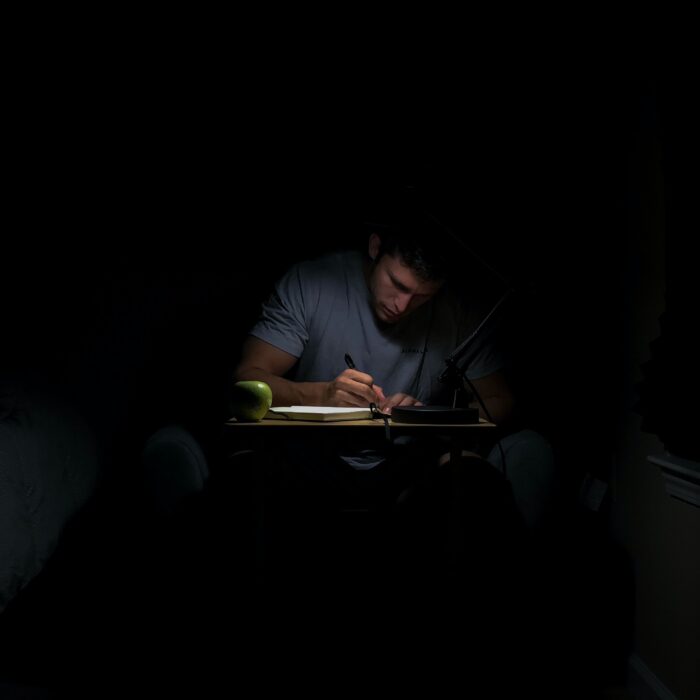You have no items in your cart. Want to get some nice things?
Go shopping
At 8:35 on a bright June morning, I got the phone call. My mother’s voice sounded shaky. She took in sharp breaths and I knew she was trying not to cry.
“What’s wrong?” I said.
“It’s Michael.” Her voice wobbled again. “He’s dead. Suicide.”
Michael. My 28-year-old cousin. A passionate musician and environmental activist. The type of guy who skipped the small talk and really connected with people. Always searching for bigger meaning in life. He’d thrown himself off a cliff a short walk from the house where he lived with his parents, my aunt and uncle. Death was instantaneous.
Five weeks later I flew to Vancouver, Canada from my home near Toronto and took a ferry to my aunt and uncle’s house. Drought had scorched the land and plumes of smoke billowed into the sky from a forest fire just north of their town. To escape the smoke, we sat inside around their kitchen table, all the windows shut tight, and they told me about Michael’s final months.
He had been struggling through a major depressive episode for over two years. His parents told me that, in an effort to find a cure for his depression, he had recently travelled to Peru to take a hallucinogenic drug from the Amazon that has been used there for centuries by indigenous tribal societies to help bring about spiritual enlightenment and healing.
“You probably wouldn’t have heard of it,” my aunt said. “But some people say it can cure all sorts of things. I don’t know though…I just don’t know.” She shook her head like she was trying to dislodge an unpleasant image from her mind. “Michael really hoped it would heal him. It’s called Ayahuasca.”
My stomach clenched. I had heard of Ayahuasca. I did know what it could do.
That night, in the room across from Michael’s, I lay awake, replaying tragic details in my mind. Bits of information my aunt and uncle had relayed as they too tried to make sense of the loss. Why did he die? My thoughts kept jumping back to Ayahuasca.
When the first light of day broke through the darkness, I awoke feeling trapped in a dream. Something was wrong. It was the light. I looked out the window. The sky was the wrong colour. It radiated an eerie yellow glow. I went outside. Smoke no longer choked each breath. The fires still burned, but the smoke had lifted and somehow made the world change colour. I climbed into a hammock strung between two trees in front of their house. Lying there, under that yellow haze, I thought back to my own experience with Ayahuasca.
18 years earlier, in a flooded reach of the Amazon rainforest, in a tiny settlement built on stilts and accessible only by boat, in the company of a handful of devout indigenous men, I took the same psychedelic drug.
I had been traveling through South America during a summer break from university when I met up with my then boyfriend, Josh, in Iquitos, Peru. Iquitos is the gateway to the Peruvian Amazon and the largest city in the world that isn’t accessible by road. I flew in from the nearby city of Lima.
I rode from the Iquitos airport to the city in the back of some kind of motorised tricycle. My hair curled in ringlets from the dampness of the air. Josh and I sat on our backpacks at a dock on the edge of the city, watching tourists board boats destined for jungle tours and wildlife encounters. I wanted to board too, but we didn’t have the funds for an organised guided excursion.
We met Manco outside a café. He told us he taught himself to speak English using a cassette tape language programme and that he’d grown up in the rainforest, in a small village deep in the jungle. He wanted work as a tour guide, but hadn’t found any yet. We paid him the little we could afford to be our guide. Manco was around our age, maybe nineteen or twenty. He wore flip flops, pants that were giving way to a hole in one knee, and an old t-shirt that had once been white but now looked grey.
We plopped our backpacks into his dugout canoe. He started up the outboard motor and we were off. Over the next two weeks Manco became more like a friend, taking his foreign visitors on an excursion through his regular jungle life. We didn’t stay at tourist lodges where indigenous people smeared their faces with earthy red paint and performed tribal dances, as one larger tour company promised to deliver. We didn’t pose for pictures with a toucan on our shoulder, like I saw offered in one brochure. We did visit indigenous people living in remote villages, but as they really lived at the time – wearing western clothes, maybe more worn and often without shoes. We fished for piranhas in the same spot our guide always had as a boy. We cooked meals with local women over open fires. We swam in the river where children played. We gathered with families in their thatch-roofed huts, Manco introducing and translating for us. Sometimes they invited us to stay the night.
It was rainy season and that section of the Amazon was mostly flooded. We slept in huts made of boards or sticks or sometimes even mud, suspended over the water on stilts. I remember taking a dugout canoe to get to the “bathroom,” which consisted of four walls that provided privacy to a bottomless wooden box with a hole in the top of it for a seat. We never visited a wildlife reserve, but saw troops of monkeys in the treetops. We even caught a glimpse of the pink river dolphin, the largest freshwater dolphin in the world.
One afternoon, we went deeper into the rainforest and Manco docked the canoe at another small settlement. The river had swollen over most of the ground and we travelled between huts along raised wooden walkways. A mountain of dirt rose out of the water and a collection of huts (maybe two or three) sat on the only dry ground. In one of those huts lived an old man. His flat feet stood bare against the earth in front of his home. Cracks in his skin rose up from under his calloused heels like fissures in the earth to which he was connected. Powdery red dirt had mixed with the sweat of his feet, forming a paste between his toes. Oversized, frayed khaki pants, kept in place by a tightly-cinched belt, hung from his lean frame. He wore no shirt and his hunched shoulders revealed his age. His weathered face appeared waxy and, for a moment, I lost myself in the creases of its labyrinthine folds. The man greeted Manco warmly, inviting us into his hut, the glint of a gold tooth illuminating his smile.
Manco said the man was his doctor. He was what we call a shaman. We spoke for a long time. I stopped looking to Manco to translate, and focused on the healer as we spoke, the translation shifting between us in the background, not blocking the connection. I remember laughing, but I don’t remember what was funny. What joke could have connected across our cultures, ages and languages? I wish I could extract that detail from the fog of my memory.
When we went to leave, the healer called Manco back and spoke words that I didn’t understand. Manco told us that the healer would like to extend to us a great honour. He invited us to return in four days to be part of a spiritual ceremony.
Even though Manco explained that the healer had never before invited outsiders to be a part of his tribe’s spiritual practice and that this was a great honour, I still imagined something like what the tour companies delivered, where there would be a performance involving traditional dances and tribal songs and people with their faces painted with that ruddy brown earth.
Four nights later, we traversed those same walkways in the dark, the beam from my headlight illuminating the worn wooden planks underfoot, and Manco’s green flip flops clacking in front of me against his heals, the water lost in darkness beneath.
Manco led us to a small platform, where he instructed us to set up our tent. That task completed, we followed him to the ceremony. Josh and I chattered, clutching our cameras, excited about what lay ahead. We turned down another path and the walkway spilled onto a large wooden platform illuminated with candles. There were no costumes or crowds – just the healer and three or four other men, all deep in some kind of meditation. This was not a show. Heat rushed to my cheeks and I slipped my camera unseen into my pocket, embarrassed by my expectations and ignorance. At that moment I understood both that we were being included in something sacred to them and that I didn’t belong there.
We sat in a circle and the healer spoke, but Manco stopped being our translator and became someone there to be healed.
Before leaving for South America, I had watched a documentary on the Amazon which mentioned that part of the spiritual practice of many of the Amazonian tribes involved taking a drug called Ayahuasca, made from local plants, and that they considered this to be “medicine”. So, when the healer held up an old plastic Coke bottle, label long gone, filled with a dark sludge, I had an idea what it was. But, to my naive reasoning at the time, a plant-based tribal concoction seemed like it should be similar in power and effect to marijuana. After all, Ayahuasca is one hundred per cent natural. In retrospect, so are arsenic, botulism, mercury and a whole host of items I wouldn’t knowingly ingest.
The healer brought the bottle and a small clay cup to one of the men in the circle. He poured some of the contents into the cup as he spoke. The man took the cup and drank. The healer repeated this process with another man, and then with Manco.
My clearest memory from that night is of the sludge slushing inside the bottle as the healer set it on the platform in front of me. That familiar red Coca-Cola bottle cap kept the contents from splashing out. The brightness of the cap stood out in the darkness of the jungle, looking as misplaced as I felt. I wondered how long they’d used that old bottle and how far it too had travelled.
The healer spoke words I didn’t understand as he poured my share into the small clay cup. I wondered what the hell I was doing there. Manco leaned over and whispered, “He’s telling you to pray for good hallucinations.”
My breath caught in my throat. Hallucinations? That was when I realised this concoction was nothing like weed. I had no interest in taking a hallucinogen.
I prayed the strangest prayer of my life: “God, please let the hallucinations be good.” And I meant it.
Why did I drink it? It wasn’t curiosity. It wasn’t for the experience. Honestly, I drank it because I didn’t want to be rude.
The healer chanted into the night. A beat sounded. Maybe drumming. Maybe a rattle shaking. Colours swirled. Someone blew puffs of breath on my head. The healer. He blew on me – hard, short breaths into my face. I turned my head and the colours swirled with the movement. One of the men puked into the water. Then another. Josh, too. I lay on my back and couldn’t move. My brain was paralysed too. Only images. Couldn’t grab thoughts…
Cities hover above me. Ugly plumes of smoke. I float in the air. Things come out of my mouth. Not words – objects. First small things, then larger. Buildings pour out of me. It hurts. Two dolphins approach with a message, but I can’t hear them. Move, body, move! My head flops to the side. There is Josh. Not a hallucination. Actual Josh. But his head isn’t attached to his body. Poor Josh. It seems to trouble him. I should help. Reaching, but my arm won’t move. Focus hard. Arm responding. Raised. My hand flops onto my face. Ouch. Panic burns my chest. Fuck Josh. He can reattach his own head. I have problems of my own. Get me out! I need to pee. Can’t move. Thighs are warm and wet. Damn. I think I peed myself.
Light seeped in through the forest canopy and thoughts began to join together somewhat more coherently. Drops of morning dew dripped from leaves overhead. Still lying on my back, I looked around. The candles had burned out. At some point in the night, I had puked over the edge of the platform, but long after everyone else had done the same. I propped myself up to sitting, thankful that my limbs responded to my will. Words evaded me. I tried to speak, but nothing came out. Dawn had broken through the night, but I had lost my ability to speak. I felt thankful that I could move again and hoped that, when I returned home, my mother wouldn’t notice my lack of words. I decided I would just smile a lot and no one would have to know I lost my words. Yes, that plan seemed good. I made it to my feet and headed for our tent. Josh came with me. I peeled off my soaking trousers and collapsed on my sleeping bag.
The healer expressed a keen interest in debriefing me when I had regained a better semblance of my mind. He said that I had been blessed and wanted to know about my visions. He said the dolphins are an important symbol and I had much to learn from what I saw that night. I could tell that Ayahuasca was truly something spiritual to him. For him, the drug brought about awakening and deeper self-knowledge. He seemed genuinely excited about my experience.
I was less enthusiastic. The drugs hit me particularly hard. My hunch is that the strong effect resulted from me taking so much longer than everyone else to throw up. The drugs were in my system longer. Plus, as the only woman there, I weighed less than the others, but took the same dose. That must have had an impact.
For at least a week, I had to pull my lagging thoughts from my mind and words were difficult to form. I lost my will to speak. It wasn’t worth the effort. Gradually, I returned to normal.
When talking about Michael’s final months, my aunt and uncle told me that Ayahuasca had grown from a little-known drug used by indigenous people of the Amazon (as it was when I tried it) to the latest trend. The drug had made it to Canada, where it was inciting controversy for its use, notably in B.C., in addiction therapy. Further, people from Canada, Europe and the USA now flocked to designated “Ayahuasca retreat centres” in Peru to pay big bucks to be “healed” by “shamans” (some legit, some of questionable authenticity) with this mind-altering substance.
At the height of Michael’s depression, in an earnest search for healing, he went to a Peruvian retreat for a month and, during that month, did Ayahuasca four to five times each and every week. I wondered what the regular use of a potent hallucinogen would do to a mind that was already in such a fragile state. I wondered if someone from a Western country could meaningfully appropriate something so entrenched in such a different culture. We cross borders. The world shrinks. We can be anywhere. But the greatest distances to travel isn’t geography. It’s the space between being and belonging.
“Is it really what they say?” my aunt had asked after learning that I too had tried Ayahuasca. “Does it bring about spiritual healing?”
I made a quick mental list: peed myself, disturbing hallucinations, puked my guts out, temporarily paralysed, couldn’t speak, mentally fried. I almost laughed. It would have been funny under different circumstances. People pay money for that now? It’s popular? “I’m not an expert,” I said. “I only tried it once.”
The land surrounding my aunt and uncle’s house and the town was mostly forest. Another rainforest, this one temperate. And on fire.
I lay in that hammock in front of their house, thinking of Ayahuasca and Michael and everything my aunt and uncle had told me. Then, in the heat of July, it started to snow. Big flakes floated down, blanketing me. It looked so hauntingly beautiful. The electric-yellow sky and the summer snow. It took me a moment to realise the flakes were ash.
*Names have been changed to respect the privacy of those involved.

About Hejsa Christensen
H. Christensen lives in Port Perry, Ontario, Canada. She has an MFA in Creative Writing from the University of British Columbia (2016) and was awarded the 2014 Random House/Hazlitt Award in Creative Writing. She has written features for magazines such as Canoe & Kayak and Outpost, worked in screenwriting, and is currently finishing off a novel.




Thanks for sharing please so share such post Pizza Hut hours
Thanks for sharing please so share such post Pizza Hut hours